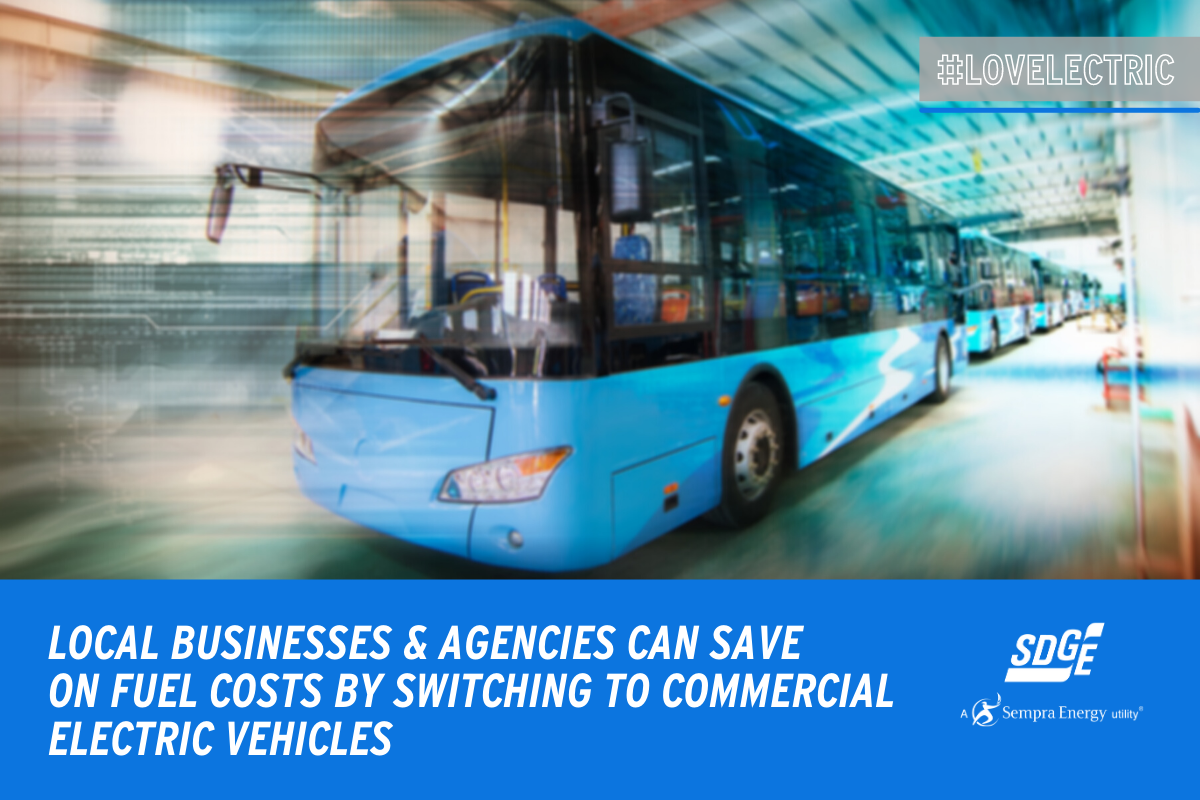Businesses, transit agencies and school districts in the region that are considering making a switch to commercial electric vehicles – such as zero-emission or hybrid trucks, shuttles and buses – are now able to take advantage of an innovative pricing plan that makes it possible to reap both financial and environmental benefits by powering their fleet with electricity.
The optional subscription pricing plan, called Electric Vehicle-High Power (EV-HP) rate, was recently approved unanimously by the California Public Utilities Commission (CPUC). Those who sign up for the plan can choose the level of power to subscribe to for their charging needs and pay for it with a fixed monthly subscription fee—similar to an internet plan where customers choose their download speed. Unlike existing commercial rates, the new pricing plan does not include demand charges – standard fees intended to recover the infrastructure costs incurred to meet commercial customers’ spikes in demand.
“One of the most impactful ways to reduce air pollution and carbon emissions is by transforming fleets of medium and heavy-duty vehicles,” said Estela de Llanos, vice president, clean transportation, sustainability and chief environmental officer at SDG&E. “Our goal is to accelerate the transition to zero-emission fleets for businesses and public agencies by providing these customers with greater control and cost certainty.”
For operators of commercial vehicle fleets, fuel cost is a major consideration, along with maintenance costs (which are typically lower for electric vehicles because they have fewer moving parts). Currently, demand charges can be higher than the energy commodity portion of a commercial customer’s bill, and therefore, could deter businesses from switching to electric fleets.
“The new rate should save drivers and fleet operators at apartments, workplaces, and public fast charging stations a ton of money on their monthly bills—all without subsidizing EV charging or shifting costs to other customers,” said Miles Muller, an attorney with the Natural Resources Defense Council (NRDC). “SDG&E’s new rate sets an example for how utilities across the country can encourage greater commercial EV adoption by improving the economics of charging through innovative rate design.”
The EV-HP pricing plan also enables customers to save by charging during times of the day when demand for electricity is low or renewable energy generation is high. Encouraging customers to charge during grid-friendly hours with the proper price signals ensures that the growing adoption of electricity-powered equipment doesn’t strain the grid during peak periods and require costly grid enhancements that must be borne by all customers
The adoption of the EV-HP rate complements SDG&E’s Power Your Drive for Fleets Program, approved in 2019 by the CPUC to build charging infrastructure for a minimum of 3,000 plug-in medium-duty and heavy-duty electric vehicles and equipment, including transit buses, school buses, delivery trucks, and forklifts. This initiative also supports the electrification of refrigerated semi-truck trailers, which are vital for transporting perishable goods. For more information, visit sdge.com/business/electric-vehicles/power-your-drive-for-fleets


